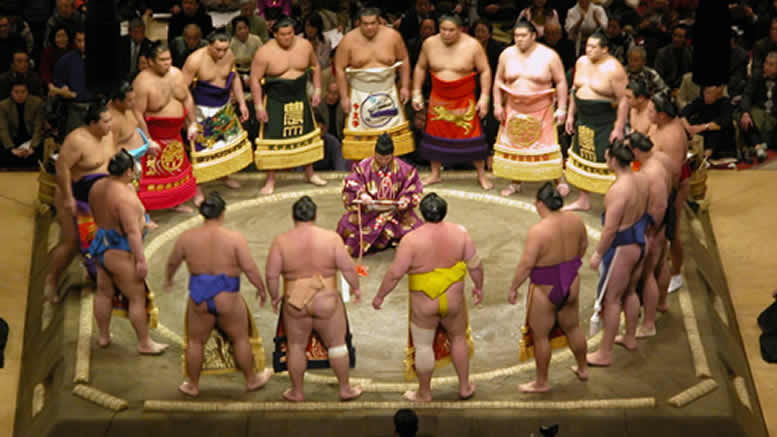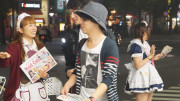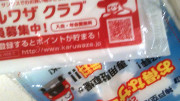Sumo wrestling is a full-contact competitive sport in which two usually giant wrestlers, or rikishi, battle within a circular ring. However, sumo is more than just a sport—it is deeply rooted in historic Japanese ceremony and ritual.

This ancient Japanese martial art dates back centuries and incorporates many ritual elements from the Shinto religion. While the rules have evolved over time, the fundamental principles remain the same.
The match takes place in a circular ring, known as a dohyō, which has a diameter of 4.55 metres. The ring is bordered by rice straw bales covered in clay, called tawara. At the centre of the ring, two white lines indicate where the wrestlers must position themselves before the bout begins. Fine sand surrounds the ring, making it easy to determine if a wrestler has stepped outside.
Sumo is one of Japan’s oldest traditions, dating back to prehistoric times. It is mentioned in some of the country’s earliest written records. Today, many Shinto ritual elements remain in sumo, such as wrestlers purifying the ring by throwing salt and stomping their legs before a bout to drive away evil spirits.
A sumo match is won when an opponent is either the first to step outside the ring or the first to touch the ground inside the ring with any part of their body other than the soles of their feet. Most matches last only a few seconds, as the sheer power and size of the wrestlers often lead to a quick imbalance and defeat.
Professional sumo is a major attraction in Japan, with around 700 professional wrestlers, many of whom are treated like celebrities and earn substantial incomes. Only oyakata—former wrestlers—have the right to train new competitors, and the sport operates under a strict hierarchical system dating back to the Edo period.
Sumo wrestlers take on wrestling names called shikona, which are given to them by their trainer. These names can change multiple times throughout a wrestler’s career, sometimes making it difficult to track individual wrestlers over time.
Each year, six Grand Sumo tournaments, known as honbasho, are held—three in Tokyo and one each in Nagoya, Fukuoka, and Osaka. Each tournament lasts for 15 days.
Being a sumo wrestler is not just a profession; it is a way of life that dictates their diet, clothing, and even hairstyle. All sumo wrestlers must wear the traditional topknot, called a chonmage.
Unfortunately, sumo wrestlers tend to have shorter lifespans than the average Japanese person. Their life expectancy is around 10 years less than the national average, with many former wrestlers suffering from heart disease, diabetes, high blood pressure, and joint stress due to their size and training regimen.
Sumo tournaments are typically held in January, March, May, July, September, and November. If you can’t attend a match in person, check your hotel’s TV in the late afternoon—many of the major tournaments are televised and make for a fascinating watch.




